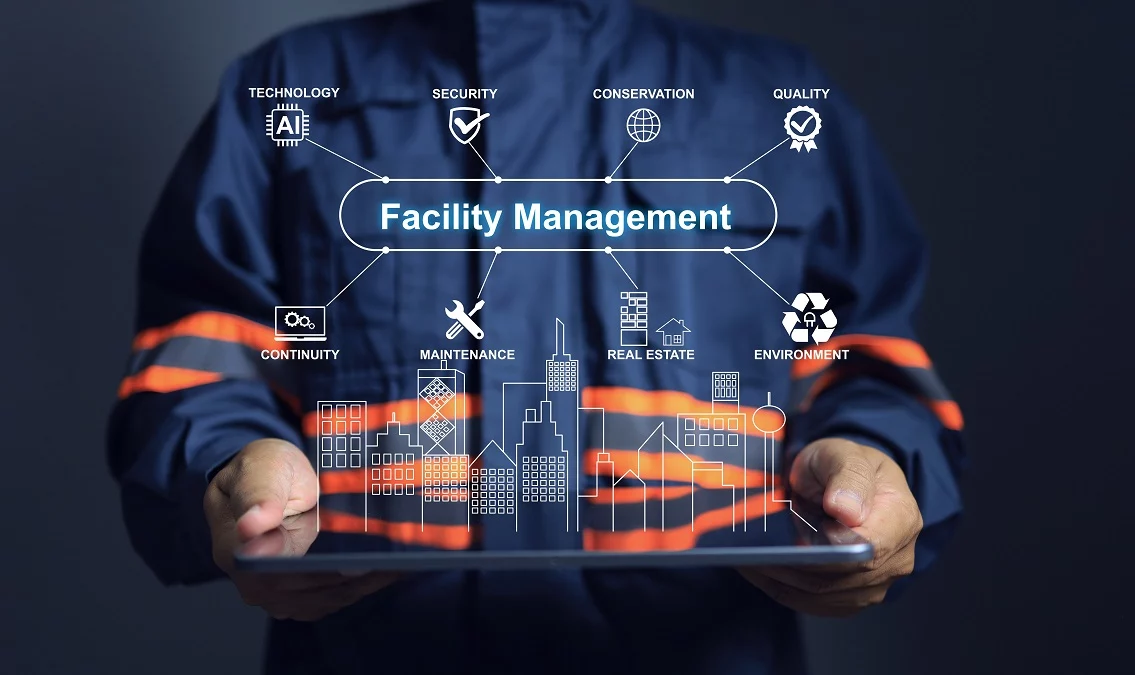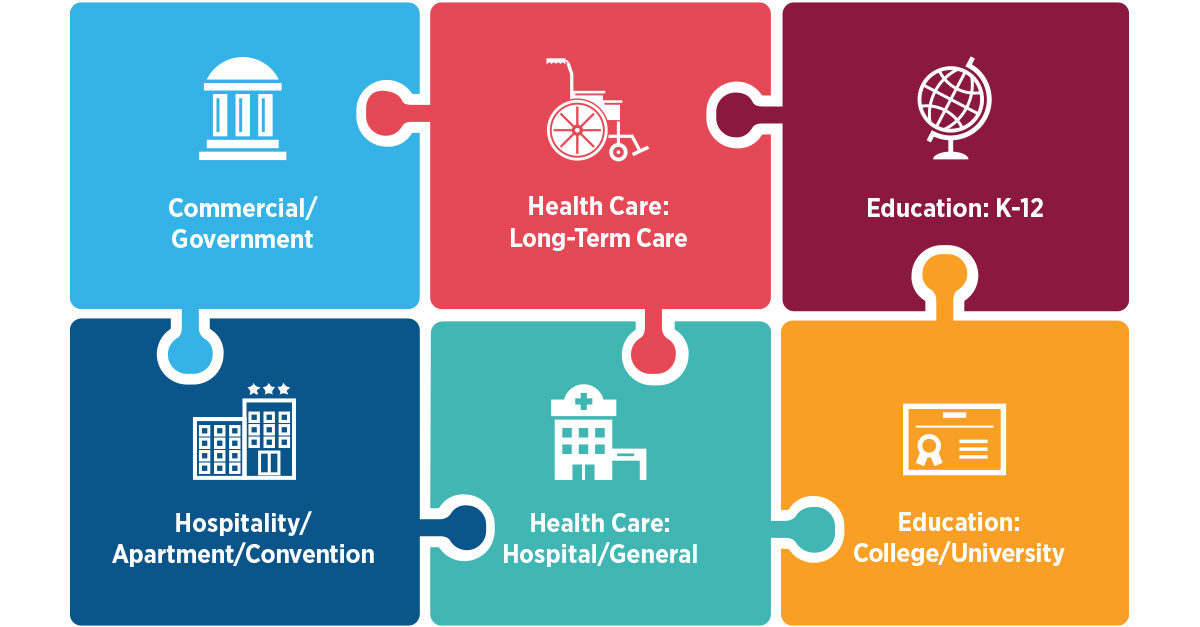Key Fads Shaping the Future of Facility Administration in 2024
As we look in advance to 2024, the landscape of center monitoring is poised for substantial transformation, driven by numerous vital fads. The assimilation of smart building modern technologies and a shift towards data-driven decision-making assurance to improve functional effectiveness while focusing on sustainability in practice.
Smart Structure Technologies

Smart building modern technologies include a large variety of systems, consisting of smart lights, heating and cooling controls, and protection systems. By incorporating these systems, center supervisors can check and adjust specifications in real-time, causing considerable reductions in energy waste and operational prices. Clever sensing units can find tenancy degrees and adjust lights and temperature level appropriately, guaranteeing that energy is just used when necessary.
In addition, these modern technologies assist in improved data collection, allowing companies to track usage patterns and identify possibilities for additional enhancements. The implementation of smart structure innovations not only adds to sustainability goals but additionally develops healthier job atmospheres that can increase employee efficiency and contentment.
As we relocate into 2024, the fostering of clever building modern technologies will likely accelerate, mirroring a wider change towards more intelligent, receptive, and sustainable facility administration techniques.
Data-Driven Choice Making
Progressively, organizations are leveraging data-driven choice making to boost center administration techniques. By utilizing information analytics, center managers can acquire actionable understandings that significantly enhance functional performance and resource allocation. The integration of advanced technologies, such as IoT sensing units and real-time monitoring systems, allows the collection of vast amounts of information on structure efficiency, tenancy rates, and energy usage.
This wide range of information permits facility managers to identify trends, forecast maintenance requirements, and proactively address problems prior to they escalate. Predictive analytics can anticipate equipment failings, lowering downtime and repair expenses. Additionally, information visualization tools help with much better interaction among stakeholders, making sure that educated choices are made collaboratively.
In addition, data-driven strategies boost critical preparation by making it possible for facility supervisors to evaluate the efficiency of current techniques and make informed choices concerning investments in modern technology or framework. As companies significantly prioritize functional excellence, data-driven decision production is positioned to end up being a keystone of successful center monitoring techniques in 2024 and beyond. Eventually, the capacity to leverage information successfully will empower organizations to develop more effective, productive, and resilient facilities.
Sustainability and Environment-friendly Practices
The emphasis on data-driven decision making naturally straightens with the growing emphasis on sustainability and eco-friendly practices within center management. As companies significantly focus on ecological duty, center managers are leveraging analytics to enhance resource usage, minimize waste, and lessen carbon footprints. This calculated technique enables the combination of energy-efficient systems, such as LED lighting, wise heating and cooling controls, and renewable power resources right into center procedures.
In addition, the execution of sustainable practices expands past energy intake. Center managers are promoting and adopting eco-friendly products reusing campaigns to produce a circular economic climate within their facilities. This not just boosts the ecological profile of the company but likewise promotes a culture of sustainability among employees.
Compliance with environmental laws is one more critical element driving the adoption of green methods. By utilizing information analytics, center supervisors can keep track of compliance metrics and determine locations for enhancement, guaranteeing adherence to global and my latest blog post local sustainability standards.
Crossbreed Work Models
A substantial change towards crossbreed job versions is improving the landscape of center administration in 2024. This standard integrates remote and in-office job, demanding a reevaluation of area use, source allotment, and employee involvement methods. Organizations are progressively recognizing the importance of flexible work areas that deal with varied demands and choices.
Center managers should adapt by executing versatile workplace layouts that support collaborative initiatives while supplying areas for focused job. This consists of the combination of technology to promote seamless communication and partnership among in-office and remote employees. Smart building services, geared up with sensing units and analytics, permit real-time monitoring of room usage, allowing organizations to maximize their settings effectively.
Moreover, crossbreed work models highlight the demand for reliable center management that focuses on staff member experience. This includes not only innovation and room layout yet additionally the advancement of plans that advertise a balanced work-life dynamic. As business browse this shift, the role of center monitoring becomes pivotal in developing an agile office that fosters performance and drives organizational success. In essence, the crossbreed work version is changing center administration, urging a positive approach to meet the progressing demands of the workforce.
Enhanced Occupant Wellness
As organizations embrace hybrid job models, an enhanced concentrate on owner health is becoming important to center administration strategies. Facility Management. This change identifies that a healthy and pleased workforce directly impacts efficiency and retention rates. Facility managers are currently prioritizing environments that advertise physical and psychological well-being, integrating components such as all-natural illumination, biophilic layout, and obtainable wellness resources

Technology plays an essential duty in this development. Smart structure systems can check environmental aspects and change settings in real-time, making certain optimum comfort levels - Facility Management. Moreover, responses mechanisms, such as tenancy sensors and employee studies, enable facility managers to continuously refine wellness efforts based on passenger demands.

Conclusion
In 2024, the future of facility monitoring will be dramatically affected by the combination of wise building modern technologies and data-driven decision-making, promoting boosted operational efficiency. Sustainability initiatives will focus on important source green practices, while the development of crossbreed work models will necessitate flexible office styles. Furthermore, an enhanced concentrate on resident wellness with sophisticated cooling and heating systems and biophilic layout will add to much healthier job environments. These fads have a peek here jointly underscore the developing landscape of facility management in reaction to modern difficulties and possibilities.
Facility supervisors are adopting eco-friendly materials and promoting recycling initiatives to produce a circular economy within their facilities.A considerable shift towards crossbreed job models is improving the landscape of facility administration in 2024.Additionally, hybrid job models highlight the need for efficient facility monitoring that focuses on worker experience.As companies embrace hybrid job versions, a heightened focus on owner health is becoming important to facility monitoring strategies.In 2024, the future of facility monitoring will certainly be dramatically influenced by the assimilation of clever building technologies and data-driven decision-making, cultivating boosted functional performance.